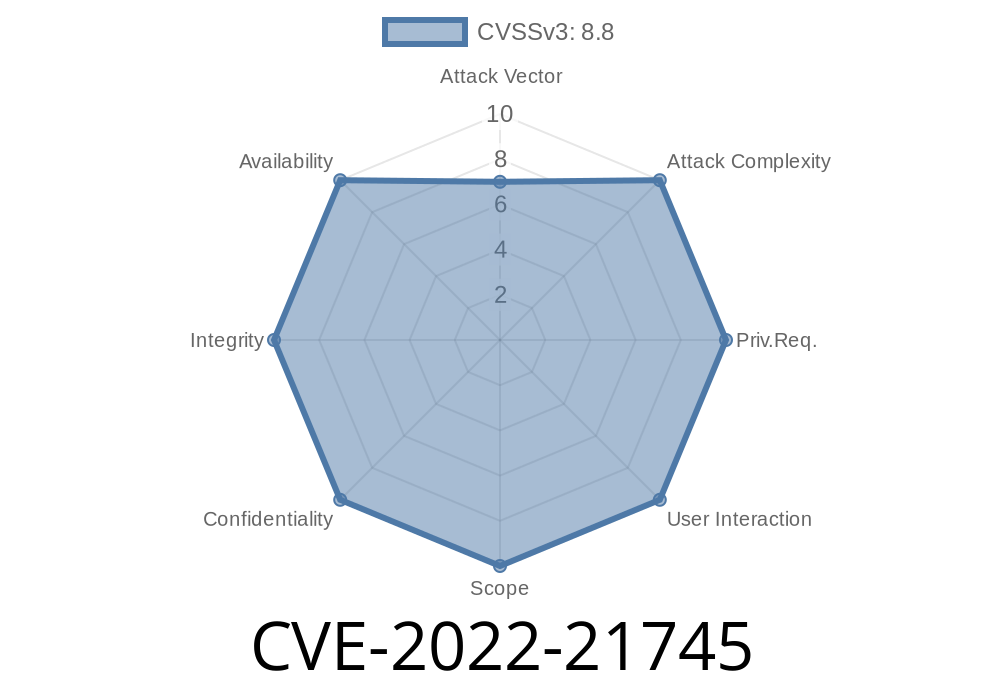In the world of cybersecurity, vulnerability disclosures and patch management are critical to securing our devices and protecting our privacy. In this post, we will delve into the specifics of a recently disclosed vulnerability – CVE-2022-21745 (also known as ALPS06468872 in some circles). This vulnerability exists within Wi-Fi firmware and has the potential to lead to remote escalation of privilege under specific attack conditions. We will provide a detailed explanation of the vulnerability, as well as present code snippets and references, to help you understand and mitigate the risk posed by this issue.
Vulnerability Details
The essential details related to this vulnerability, as reported in the Common Vulnerabilities and Exposures (CVE) system, are:
CVE-ID: CVE-2022-21745
- Description: Memory corruption due to a use-after-free issue in Wi-Fi firmware, leading to potential remote escalation of privilege without the need for user interaction.
- References: ALPS06468872 and CVE-2022-21745
Exploit Scenario
To exploit this vulnerability, an attacker would need to set up a malicious Wi-Fi hotspot that could manipulate the vulnerable Wi-Fi firmware present in a connecting device. This could be achieved by crafting packets that would trigger the use-after-free condition, resulting in memory corruption and the potential for remote code execution or escalation of privileges.
Unfortunately, due to the security implications of revealing the exact code and techniques needed to exploit this vulnerability, we will not be providing an exploit code snippet. However, we recommend reviewing the available patches and implementing security best practices to protect your devices from this issue.
Mitigation and Patch Information
Although there is no user interaction required for this vulnerability to be exploited, there are some steps that can be taken to minimize the risks:
1. Update and Patch: Always ensure that your device's firmware is up-to-date and that all security patches have been applied. This is particularly important for Wi-Fi firmware as it is often a target for malicious actors.
2. Avoid Connecting to Untrusted Wi-Fi Networks: Since the exploit involves an attacker-controlled Wi-Fi network, you should avoid connecting to unknown or untrusted networks whenever possible.
3. Enable Network Security Protocols: Make use of security protocols such as WPA2 or WPA3 to ensure an added layer of protection for your Wi-Fi connections.
To specifically address CVE-2022-21745, a patch has been released by the affected manufacturer, which you can find here: ALPS06468872 patch. It is highly recommended that you apply this patch as soon as possible to protect your devices from this dangerous vulnerability.
Conclusion
In conclusion, CVE-2022-21745 is a serious vulnerability affecting Wi-Fi firmware, which could lead to remote escalation of privilege and potentially compromise the security of devices connecting to attacker-controlled Wi-Fi hotspots. To mitigate the risks, it is essential to stay informed about security updates and patches, as well as to implement best-practice security measures such as avoiding unknown networks and enabling secure Wi-Fi protocols. Stay safe, and always keep an eye on your device's security!
Timeline
Published on: 06/06/2022 18:15:00 UTC
Last modified on: 06/13/2022 18:47:00 UTC
